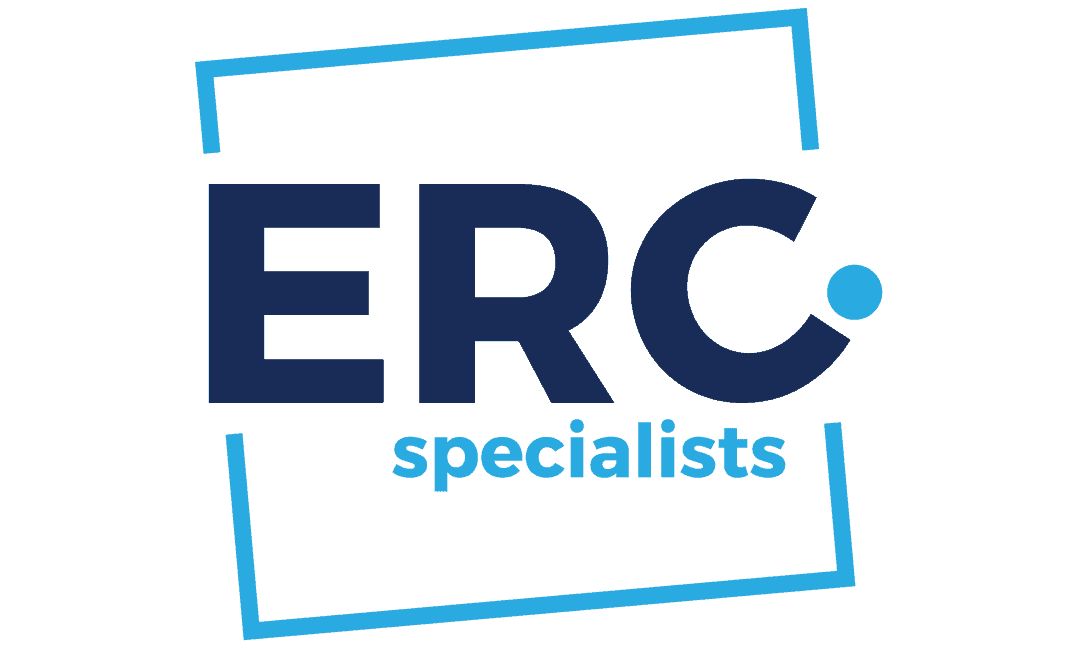Running a nonprofit? Use this guide to learn how to register your nonprofit company so you can utilize your potential tax-exempt status.

Whether you’re just getting started running a nonprofit or you have already begun, you might be wondering how to register a nonprofit organization. Registering your nonprofit is an important step because it legitimizes your organization and provides several specific advantages. The most common and beneficial benefit is that nonprofits registered as 501(c)(3) organizations have tax-exempt status.
Read on to learn more about how to register as a nonprofit organization including a step-by-step actionable guide to help you make it official!
Why Register As A 501(c)(3) Nonprofit?
It is possible to informally operate as a nonprofit organization without officially registering as a nonprofit. However, until you make it official, you are basically turning away free money, as well as other benefits.
Nonprofit VS Tax-Exempt Status
Generally speaking, nonprofits serve the communities they’re located in through humanitarian aid, animal rescue, or natural disaster relief. These organizations are not always tax-exempt, however. The distinction of “nonprofit” is determined by the state you operate in while the federal government grants “tax-exempt” status through the IRS.
Nonprofit organizations are groups made for purposes other than making money. No part of the organization’s income can be given to its members, directors, or officers. Nonprofits can take the form of corporations, an individual enterprise, unincorporated associations, partnerships, foundations, or condominiums. These entities are organized under state law.
You can operate as a nonprofit organization without being recognized as such.
A good example of this is neighborhood or local groups that raise funds to help smaller groups in their communities or one specific individual. If you wanted to expand a local/small-scale nonprofit and apply for federal tax exemption, you will have to be recognized by the government as a nonprofit organization.
Keep in mind that not all nonprofits are eligible to apply for this distinction.
After you’ve become a recognized nonprofit, you are able to apply to be exempt from federal, corporate, and income taxes for most kinds of revenue.
The application form is, however, 30 pages long and it can take the IRS 3 to 12 months to be granted tax-exempt status.
According to the IRS, organizations that are operated exclusively for religious, charitable, scientific, testing for public safety, literary, educational, or other specified purposes and that meet certain other requirements are tax-exempt under IRS Code Section 501(c)(3).
Certain organizations do not need to file to be granted 501(c)(3) nonprofit status, but most choose to file anyways to receive their official letter in order to solicit donors and complete state tax exemption applications. These organizations include churches or parts/associations of churches, subordinate organizations covered by a group exemption, and any organization that has under $5,000 gross receipts regularly and isn’t a private foundation.
7 Benefits To Holding Tax-Exempt Status As A Nonprofit
- Tax Deductions: On top of your tax benefits, your donors will be able to receive a tax deduction for any money they donate to your organization.
- Tax exemption: As previously discussed, you’ll be exempt from federal and state income, sales, and property tax.
- Legal Protections: Directors and members will be protected from being held personally responsible for your organization’s debts or liabilities through limited liability protection. Because of this, your nonprofit is considered a separate entity and can enter into contracts, sue or be sued, take out business loans, etc. while ensuring that anyone who works for the organization is held personally liable.
- Access To Grants: You will be able to apply for grants directly and apply to specific business grants that are only available to registered nonprofits.
- Access To Discounts: As a registered nonprofit, your organization will be eligible for discounts through USPS and credit card processors.
- Crowdfunding Eligibility: Tax-exempt status allows your organization to raise money through nonprofit crowdfunding platforms like CrowdRise. Some platforms will also eliminate fees for registered nonprofits.
- Credibility: Official 501(c)(3) nonprofit status shows potential donors that you are a legitimate organization and not a scam. You’re likely to attract more donors and larger donations as an official tax-exempt organization.
How To Register Your 501(c)(3) Nonprofit In 8 Steps
These steps will guide you through the general process of registering your nonprofit as a 501(c)(3) organization. Keep in mind that some of these steps can vary from state to state, so do your research.
But, no matter where you live or choose to operate your nonprofit, you will have to follow all of these 8 steps!
1. Select A Name
There’s a good chance you already have a working name for your organization. In order to make your nonprofit official, however, you’ll have to make sure that the name you’ve chosen is available and not already trademarked by another organization. In order to determine name availability, you’ll need to check with your Secretary of State office as well as the U.S. Department of Commerce website. Most states now have a search engine dedicated to registered business names. You can normally pay a standard fee to reserve your name until you’re able to file your articles of incorporation.
Choose something that is short, to the point, and explains the primary purpose of your organization. Nothing is worse than a potential donor or partner misunderstanding your organization’s mission and potentially losing out on funding/other support.
It’s a good idea to form your board of directors before you begin the process of filing for incorporation. Some, but not all, states require your board members’ names to be included in the incorporation documents. You must list at least three directors when you file for 501(c)(3) tax-exempt status. It’s best to make sure that these directors are not related by blood or marriage.
3. File Articles Of Incorporation
The articles of incorporation are the documents that have to be filed with your secretary of state to form an official corporation for your nonprofit. This documentation includes basic information like your organization’s name, location, board of directors, and purpose/mission statement. Keep in mind that incorporating your nonprofit doesn’t make it tax-exempt. There is certain language from the articles of incorporation that you will need to include when you apply for tax-exempt status later. Your state’s nonprofit formation information/instructional packet should include the required information.
Interestingly enough, some states do also require you to publish a notice of incorporation with your local newspaper along with filing the articles of incorporation.
4. Write Bylaws
Once your articles of incorporation are approved, you can write your bylaws. Bylaws are your nonprofit organization’s internal rules and guidelines for procedures like voting and electing officers. Your bylaws are crucial not only for your organization’s operation, but you must include a copy of them in your 501(c)(3) application.
5. Hold First Board Meeting
The first meeting of your board is a time for celebration, but also a time for official processes. This first meeting is the time for you to make your organization’s articles of incorporation part of the official record, officially adopt your bylaws, and elect your officers. Assign an individual to take minutes of the meeting which will need to be kept on file. It’s a good idea to hold this first board meeting before you file for tax-exempt status.
6. File For EIN
The last bit of information you need before you can file for your 501(c)(3) status is an Employer Identification Number (EIN) from the IRS. Even if you don’t have employees yet, an EIN is still required to obtain your tax-exempt status. The IRS will use your EIN to track your nonprofit’s financial activities. An EIN is important for later on when you need to open a business bank account and hire your first employee(s).
To obtain an EIN, file Form SS-4 with the IRS. Learn more about applying for an EIN number.
7. File For Tax-Exempt Status
After you have appointed your directors, obtained incorporated status, established your bylaws, and received your EIN, you’re finally ready to file with the IRS for your 501(c)(3) tax-exempt status! At this point, before filing, you are a nonprofit. You are not tax-exempt (with some exceptions as we mentioned above) until you apply for 501(c)(3) status with the IRS.
For nonprofit organizations in most states, you only need to do this at the federal level, but some states require you to file for tax-exempt status at the state level, too. An example of this is California. Nonprofits in the state have to apply for tax exemption with the California Franchise Tax Board after they obtain tax-exempt status from the IRS.
To apply for federal tax-exempt status under section 501(c)(3) of the Internal Revenue Code (this is where the term “501(c)(3) nonprofit” comes from) you will need to file Form 1023 with the IRS. If your nonprofit has gross receipts of less than $50,000 and less than $250,000 in assets, you are able to file the 3-page 1023-EZ application instead of the 26-page standard 1023.
Here is some of the information you’ll need to complete your 1023 application:
- Your budget, include any balance sheets or other financial information
- The names of your directors
- Copy of your articles of incorporation
- Copy of your bylaws
- Items included in the articles of incorporation or bylaws including a dissolution clause, conflict of interest clause, and/or statement of exempt purpose
You should consider consulting with a lawyer or someone familiar with tax-exempt law when preparing your application. This is a fail-safe to make sure that your application meets all state and federal requirements, hopefully saving you some time, energy, and headaches! Completing and reviewing a 50+ page 501(c)(3) application package on your own is no easy task.
Even after your organization receives its letter of determination from the IRS with tax-exempt status, you will need to submit Form 990 each year to maintain your 501(c)(3) status. This form provides financial information about your nonprofit to both the IRS and the public.
8. Obtain Business Licenses & Permits
As soon as you have your tax-exempt status, you’re well on your way to start raising funds.
Before you begin, you’ll need to make sure that you’re in compliance with all business licenses and permits applicable to your state and your organization’s activities. Learn more in our article How To Get A Business License: Expected Cost, Timeline, & Resources To Get You Started.
Depending on your state of operation, you may need a sales, zoning, or city business permit. Check with your local department of consumer affairs to determine what licenses and permits you need to operate as a nonprofit.
Launch & Promote Your Nonprofit
You’ve filed for incorporation and have been approved, you’re officially a tax-exempt organization, now it’s time for you to start getting some donations. Funds can come from a number of sources. Individual donors, trusts, foundations, partners, etc. are all able to contribute to your nonprofit’s mission. But, once they’ve agreed to donate, how are you going to accept their gift?
Accepting Online Donations
The easiest and most common way your nonprofit will receive donations is through an online portal. It’s important that you are equipped for online donations because it frees up time for yourself and/or your employees, you can accept them around the clock, it’s easy to store donor information for future outreach, and you can promote awareness of future campaigns. Most online processors make it easy for you to automate regular payments (monthly, bi-annually, annually, etc.) which increases the overall power of a donation by creating a recurring donor. A lot of credit card payment processors will reduce or even cancel out a nonprofit’s fees.
We recommend processors like Stripe, Shopify, and Square. You can click each linked name to visit our in-depth guides to learn more about these payment processors!
More Resources For Your Nonprofit Organization
Accounting software is something you should be keeping in mind as you begin collecting donations and speaking with potential donors. You want to make sure you are able to track each cent that comes into your nonprofit and goes back out into your community. We offer a full article, QuickBooks for Nonprofits: The Complete Guide, that you can read to determine whether or not QuickBooks is the right choice for you and your nonprofit.
QuickBooks can be handy for your organization because of its integration capabilities. Good integrations can perform vital functions like donation tracking, event registration, membership management, and more. Notable integrations like Sumac, Kindful, Breeze, Neon CRM, and Method: Donor. Learn more about QuickBooks Online and potential integrations for your nonprofit.
Did you know there are credit cards specifically designed for use by nonprofit organizations? Using a credit card for your organization can help you access rewards and benefits while you pay for office supplies, take staff or donors out to dinner, and travel to events and conferences. Keep in mind that nonprofits have a credit score like any other organization. Learn more about the credit cards available to you and how to build your organization’s credit score in our article The 9 Best Credit Cards For Nonprofits.
What’s Next For My Nonprofit Organization?
As you’ve learned, there is a good amount of work involved in registering and maintaining your nonprofit’s 501(c)(3) tax-exempt status. You can rest easy knowing that your organization and those that you serve will ultimately benefit from your hard work and continued diligence. With an officially registered tax-exempt nonprofit, you will be able to do the best good and make the most impact on the lives of those in need. Take advantage of the tax exemptions, tax-deductible donations, and added credibility your organization has now that you are registered as a 501(c)(3) nonprofit.
If you aren’t sure whether or not your nonprofit qualifies for 501(c)(3) status, the IRS has information you can review on the different kinds of tax-exempt/nonprofit organizations they recognize.
If you’ve finished this article and realized that a nonprofit structure isn’t right for your organization after all, you can check out our article on different types of business structures.
Good luck, and we wish your nonprofit and those you serve only the best!
Registering As A Nonprofit: FAQs
What are the 3 types of nonprofits?
The 3 types of nonprofits are public charities, private foundations, and private operating foundations.
Can you be a nonprofit organization without 501(c)(3) status?
Yes, you can be a nonprofit organization and not have 501(c)(3) status. You will need to be registered as a nonprofit before applying for tax-exempt status.
How long does it take for the IRS to approve a nonprofit?
It can take the IRS 3 to 12 months to approve a nonprofit.
How much does registering a nonprofit cost?
The cost of registering a nonprofit varies from state to state but it will cost either $275 or $600 to file, so you won’t pay more than $1,000 to register a nonprofit.
Should I hire a lawyer to help with the nonprofit registration process?
We recommend hiring a lawyer or working with someone familiar with tax-exempt law when registering your nonprofit to make sure you’re meeting all state and federal requirements when filing for 501(c)(3) status.













